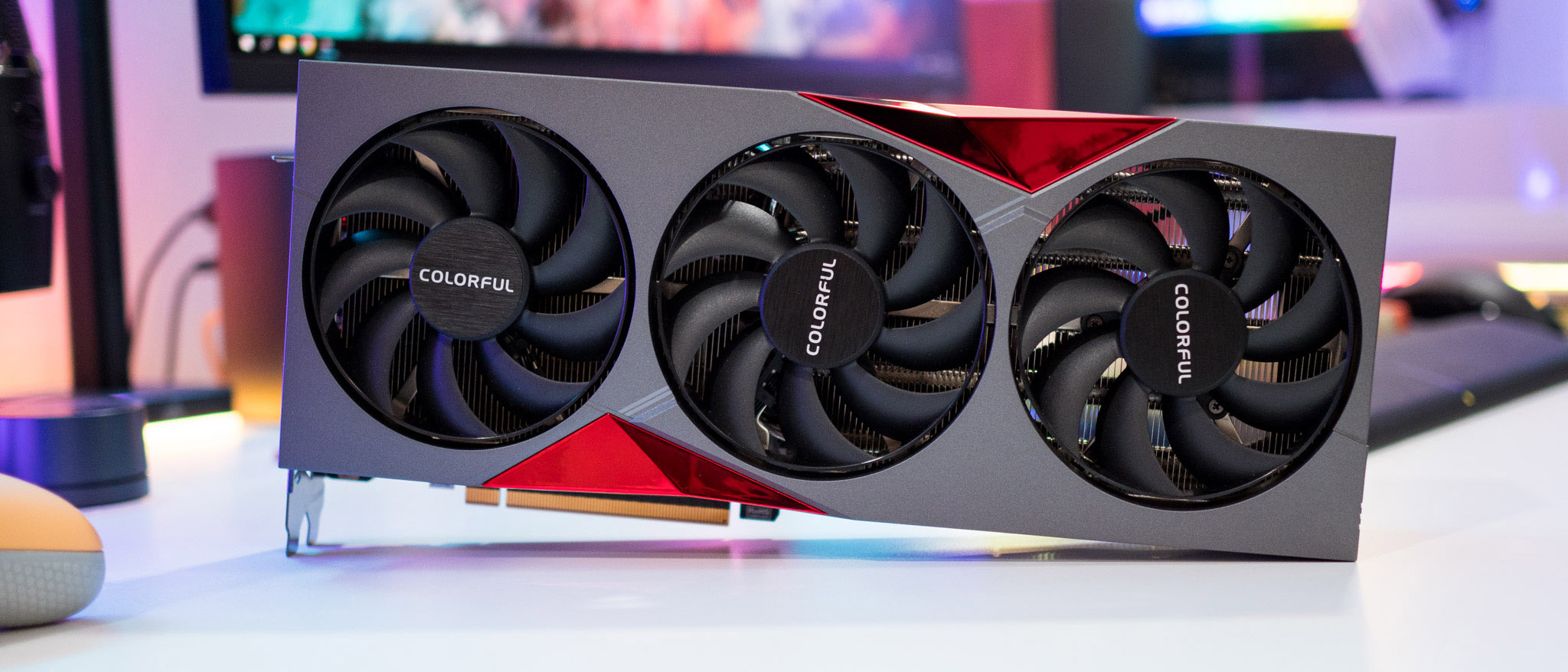Windows Central Verdict
Thanks to an energy-efficient node and architectural changes, the GeForce RTX 4080 delivers huge gains in all key areas over the RTX 3080. This is the second-fastest video card available today, and while you're paying a hefty premium, you are getting a lot of power — the card offers better performance than the $2,000 RTX 3090 Ti. If you intend to play at 4K, this is the card to get.
Pros
- +
Amazing at 4K gaming
- +
DLSS 3 is groundbreaking
- +
16GB of video memory
- +
Noticeably faster than 3090 Ti
- +
Understated design without overt RGB lighting
Cons
- -
Costly
- -
Power connector is finicky
- -
Three-slot design
Why you can trust Windows Central
The GeForce RTX 30 series was characterized be extremes. An overwhelming demand for these video cards at launch coincided with a pandemic-driven manufacturing shortage, and it was extremely difficult to get a hold of any of these cards — I had to wait over eight months to get my RTX 3080. But even as NVIDIA and its AIB partners started to get manufacturing under control in 2022, demand for the best mining GPUs declined as the industry crashed, leading to a glut of inventory.
It's in this setting that the RTX 40 series makes its debut. NVIDIA is taking things to a new level with the Ada Lovelace architecture, and the RTX 4080 and RTX 4090 deliver huge gains over their RTX 30 series predecessors. The RTX 4080 in particular is in an interesting position this year; the card was originally meant to launch in two variants — a standard 16GB model and a lower-cost 12GB variant with fewer cores — and user backlash against the 12GB model led NVIDIA to spin off that card into its own SKU.
That leaves us with the 16GB version of the RTX 4080. NVIDIA has a lot to offer with this generation other than new cores; the overhauled architecture aims to deliver much better efficiency figures, and the introduction of DLSS 3 is a huge differentiator for the brand. For this review, I'm using Colorful's base variant of the RTX 3080 — the Colorful GeForce RTX 4080 16GB NB EX-V. This card is in line with NVIDIA's RTX 4080 Founders Edition, offering the same 9,729 cores with a 16GB GDDR6X interface over a 256-bit memory bus and a base frequency of 2205Mhz.
The RTX 4080 starts off at a lofty $1,199, $500 more than the RTX 3080 when it debuted two years ago. Both launches in the RTX 40 series thus far have been listed at a premium, with the RTX 4090 starting off at a ridiculous $1,599. So let's take a look at what you're getting with the RTX 4080, and whether it makes sense to get the card over the RTX 3080.
Colorful GeForce RTX 4080: Pricing and availability
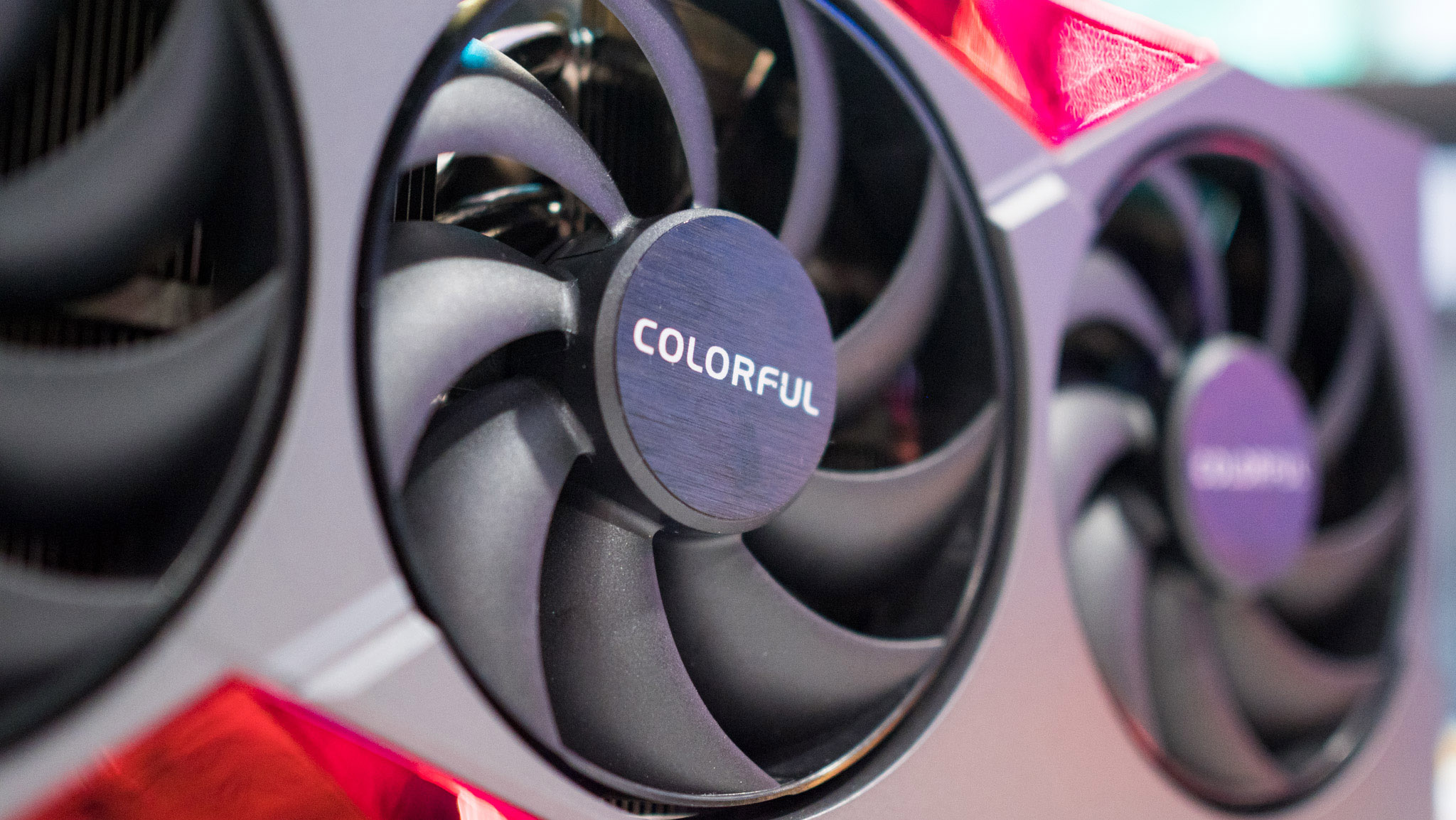
NVIDIA unveiled the RTX 4080 series on November 15, 2022, with sales kicking off the same week. Like previous generations, NVIDIA sells its Founders Edition on its own, and there are several AIB partners that offer their own version of the RTX 4080 — with the notable omission of EVGA. The Founders Edition of the RTX 4080 retails for $1,199, and you'll find AIB cards that start off at the same $1,199 figure and go all the way up to $1,550. The Colorful variant I'm using costs $1,249.
Thankfully, availability isn't an issue here, and as of January 2023, the RTX 4080 is available direct from NVIDIA as well as major retailers. The card is selling at its list price — unlike the RTX 4090, which is sold out at most retailers or going for upwards of $2,000.
Colorful GeForce RTX 4080: Hardware overview
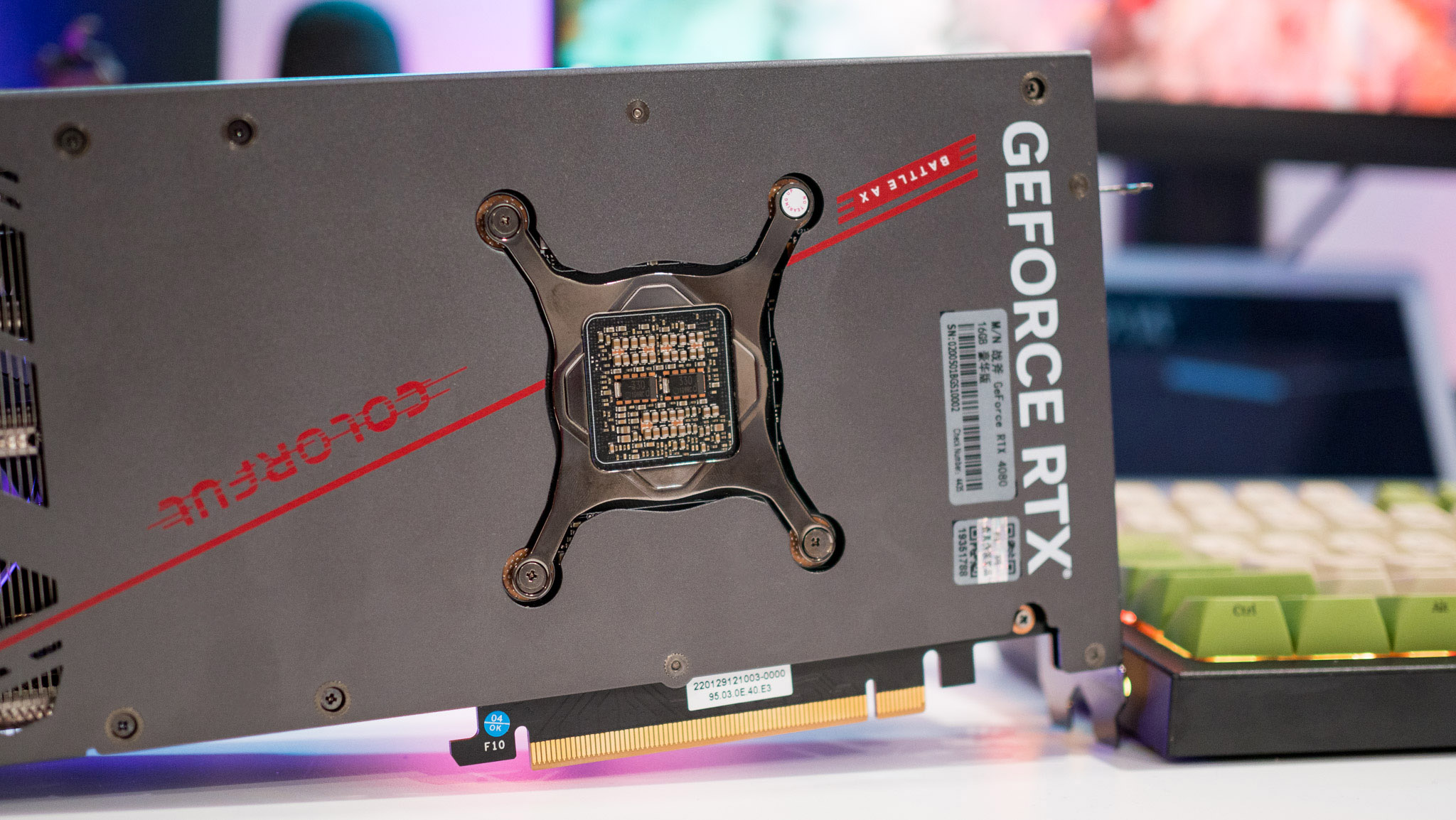
NVIDIA made a lot of tweaks with this generation, not least among which is how the GPUs are manufactured. Unlike previous years, NVIDIA isn't reusing the same silicon with fewer cores — the RTX 4080 features its own AD103 silicon that has a smaller surface area than the AD102 that's used for the RTX 4090, and this allows for savings in manufacturing costs.
All the latest news, reviews, and guides for Windows and Xbox diehards.
That said, you'll find a wider gulf than usual between the RTX 4090 and 4080, with the latter offering 9,728 cores — 40% less than the 4090 — and 16GB of memory over a narrower 256-bit wide interface, versus 14GB at 384-bit for the 4090.
Similar to its predecessor, the 4080 gets a TDP of 320W. NVIDIA went with a new 12+4 pin 12VHPWR connector that delivers up to 450W of power, and you'll find a connector in the box that lets you plug in three PCIe 8-pin cables to the card.
Not much has altered when it comes to the ports, with the RTX 4080 offering three DisplayPort 1.4a ports along with one HDMI 2.1a. The RTX 30 series introduced hardware-level AV1 decode, and that's available here as well.
Here's a high-level overview of what you're getting with the RTX 4080, and how it fares against the RTX 4090 and the RTX 3080:
| Category | GeForce RTX 4090 | GeForce RTX 4080 | GeForce RTX 3080 |
|---|---|---|---|
| GPU | AD102 | AD103 | GA102 |
| Cores | 16384 | 9728 | 8704 |
| ROPs | 176 | 112 | 96 |
| TFLOPS | 82.6 | 48.7 | 29.8 |
| Core Clock | 2235MHz | 2205MHz | 1440MHz |
| Boost Clock | 2520MHz | 2505MHz | 1710MHz |
| Memory | 24GB GDDR6X | 16GB GDDR6X | 10GB GDDR6X |
| Memory Bus Width | 384-bit | 256-bit | 320-bit |
| Bandwidth | 1008GB/s | 716GB/s | 760GB/s |
| Transistors | 76.3 billion | 45.9 billion | 28.3 billion |
| TDP | 450W | 320W | 320W |
| Process Node | 4nm, TSMC | 4nm, TSMC | 8nm, Samsung LSI |
| Price | $1,599 | $1,199 | $699 |
Colorful GeForce RTX 4080: Architecture
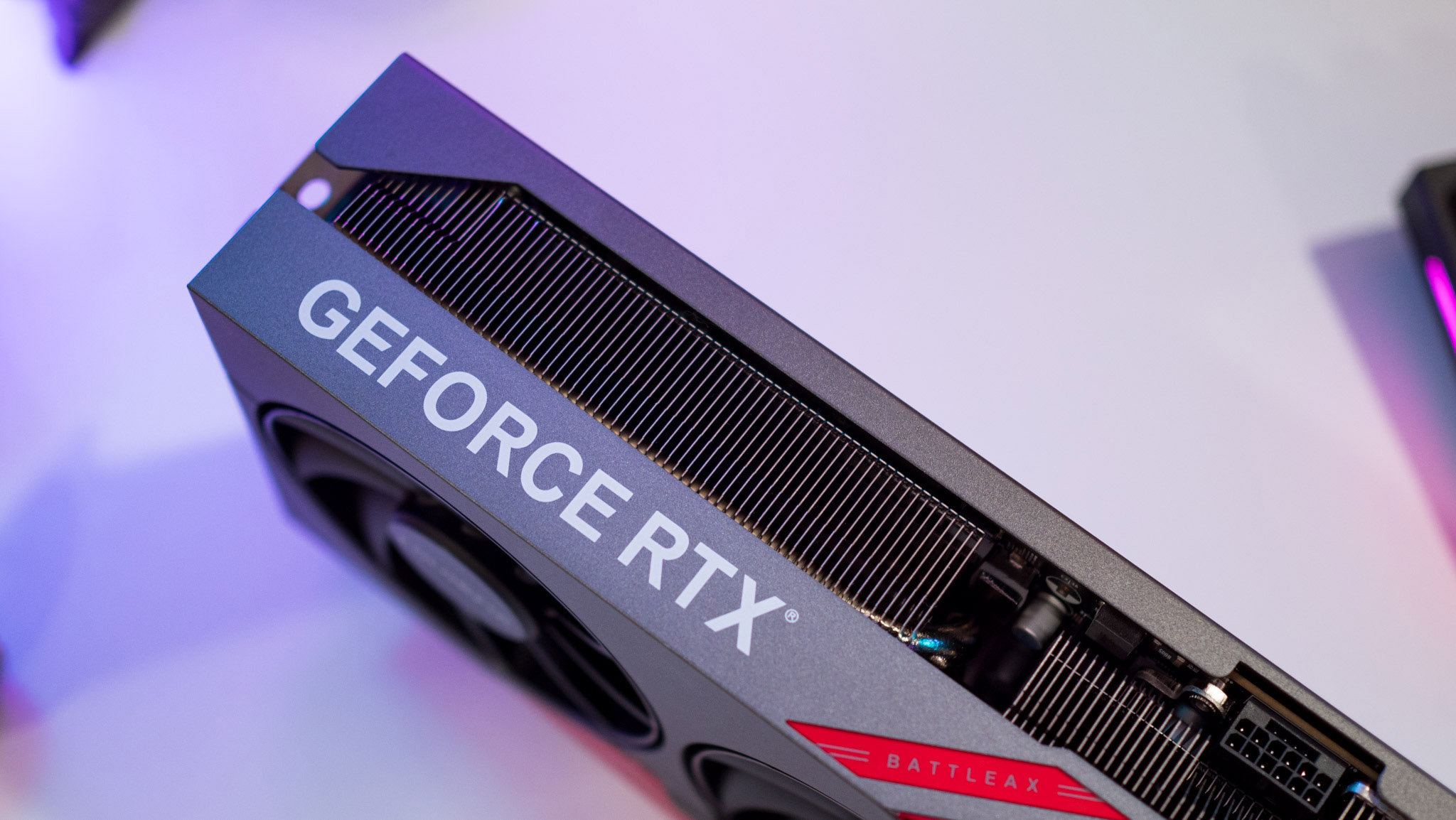
The RTX 4080 sees the introduction of the Ada Lovelace cores and a new Optical Flow Accelerator, along with new RT cores. NVIDIA has shifted from Samsung's 8nm to TSMC's 4nm node for this generation, leading to much better efficiency figures — after all, the best Android phones are made on the same node.
The GPU has a PCI-E 4.0 x16 host interface and features 16GB of GDDR6X memory over a 256-bit interface, leading to bandwidth of 716GB/s. The AD103 silicon has seven raster engines, and each of these has six Texture Processing Clusters. The TPC houses two Streaming Multiprocessors and a Polymorph unit.
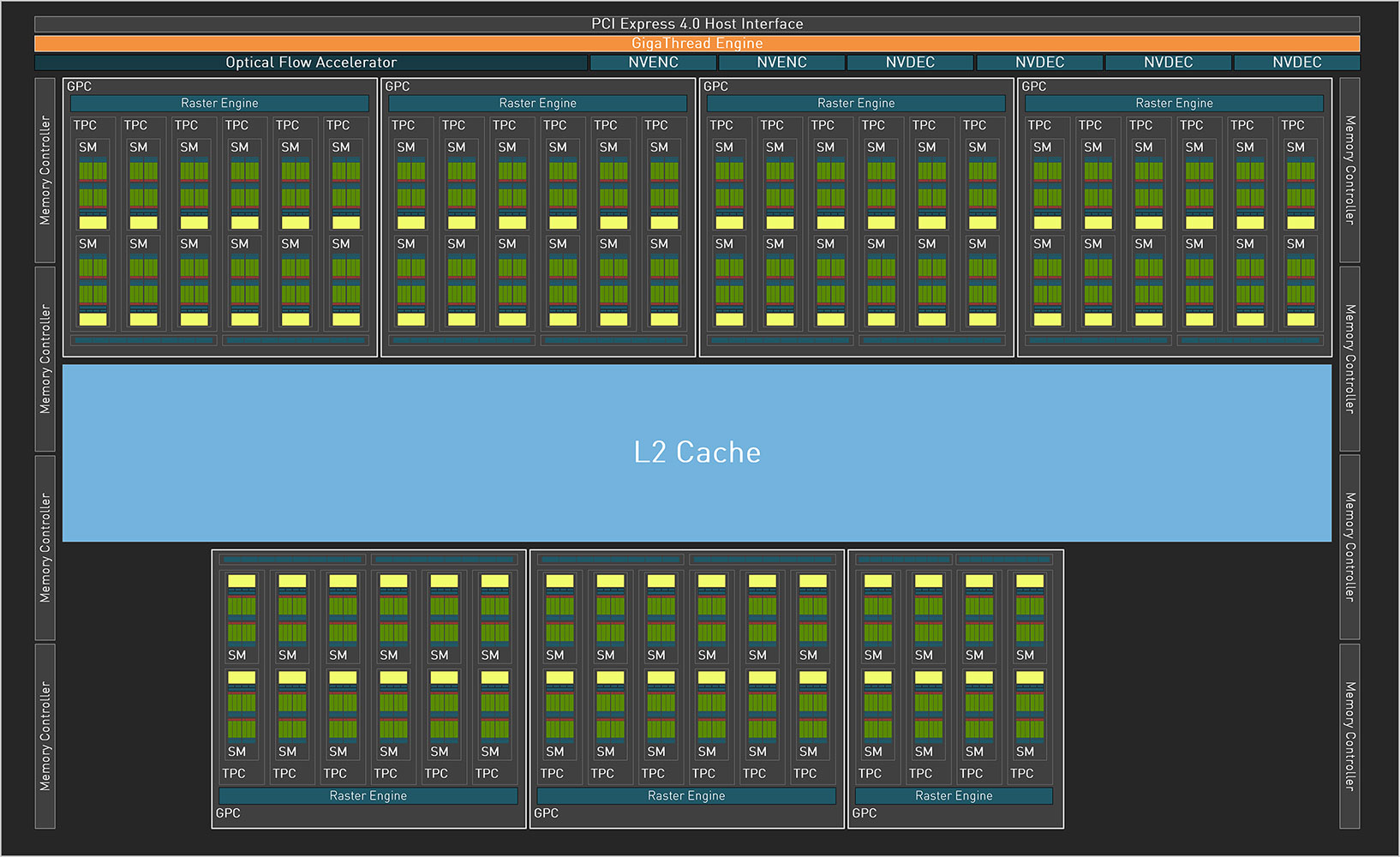
These SMs contain 128 CUDA cores each, and like the RTX 30 series, they're divided into two clusters: half of the cores are solely for FP32 while the other half is for FP32 or INT32, with a distinct data path available for both clusters.
With six TPCs in an engine, we get 1,536 cores for each unit, and the AD103 silicon has a total of 10,752 cores. But NVIDIA lobbed off four TPCs for the RTX 4080, so we get 9,728 cores instead. NVIDIA overhauled the RT cores, and the third-gen cores are able to deliver better shading performance while utilizing fewer resources.
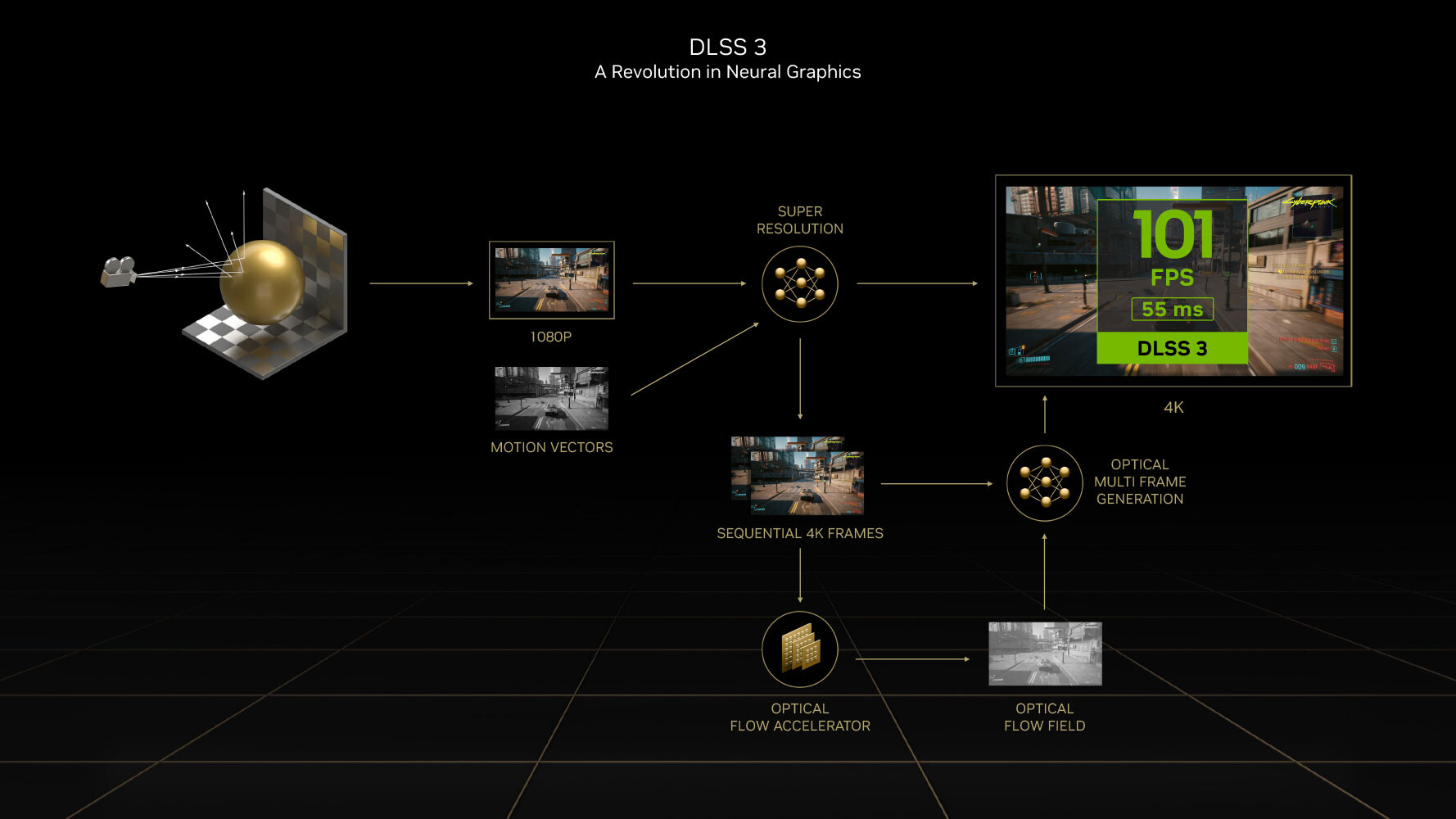
Possibly the biggest change with this generation is the introduction of DLSS 3. It now comes with a new Frame Generation mode that leverages AI to automatically create every alternate frame, and this is achieved with the new Optical Flow Accelerator and fourth-gen Tensor units.
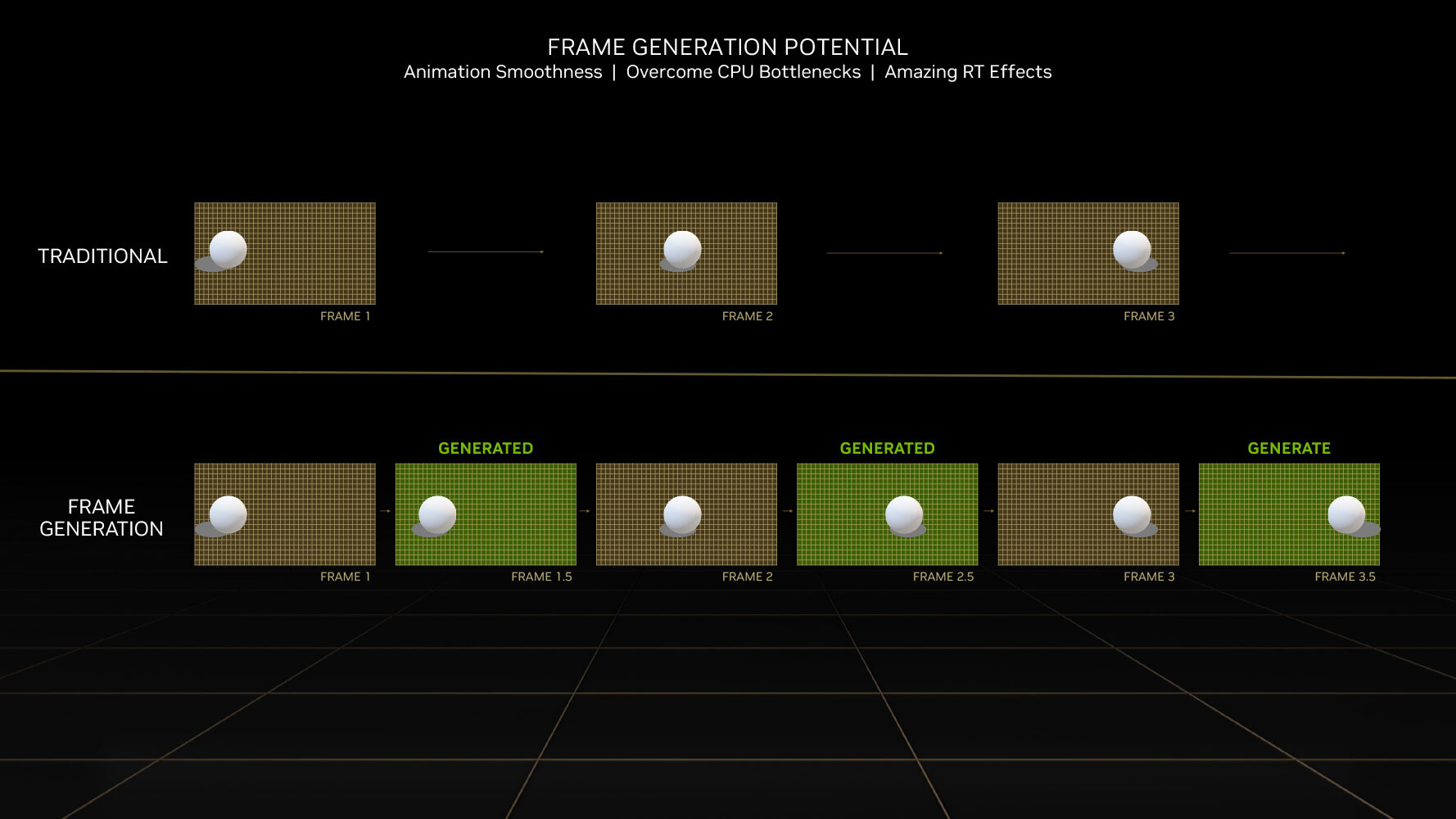
How it works is that the Optical Flow Accelerator predicts what the next frame in a scene will be, and it uses Optical Multiframe Generation to inject an intermediate frame in between, so you basically get higher framerates without any decline in quality. As the Optical Flow Accelerator is a key part of the feature, Frame Generation is limited to RTX 40 series cards.
Colorful GeForce RTX 4080: Design
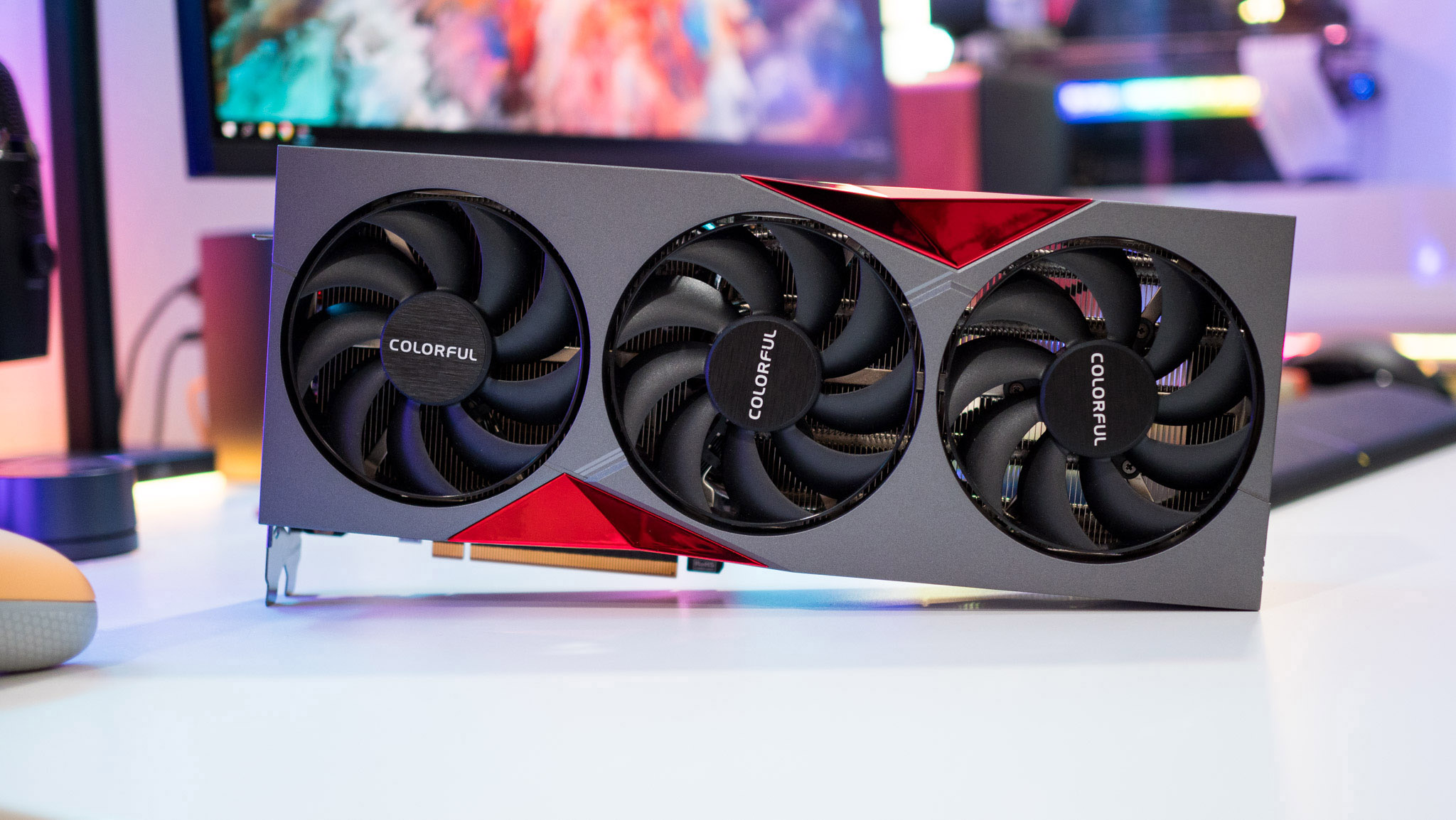
Having used NVIDIA's Founders Edition cards for the last two generations in my gaming machine and then switching to the RGB lighting extravaganza that is the EVGA GeForce RTX 3080 FTW3, I was interested in seeing what Colorful is doing in this category. The GeForce RTX 4080 16GB NB EX-V has a dark grey color scheme that looks quite good, and the red accents with the jagged edges add a bit of flair to the design.

I also got Zotac's GeForce RTX 4090 and 4080 alongside the Colorful RTX 4080, and they have a much more aggressive style. Colorful did a good job delivering a clean aesthetic here, and if you don't want a card with too much RGB lighting, this is a great alternative. That said, the RTX 4080 is inherently larger and heavier than its predecessor, and the three-slot design means it will take up a lot of room in your gaming rig.
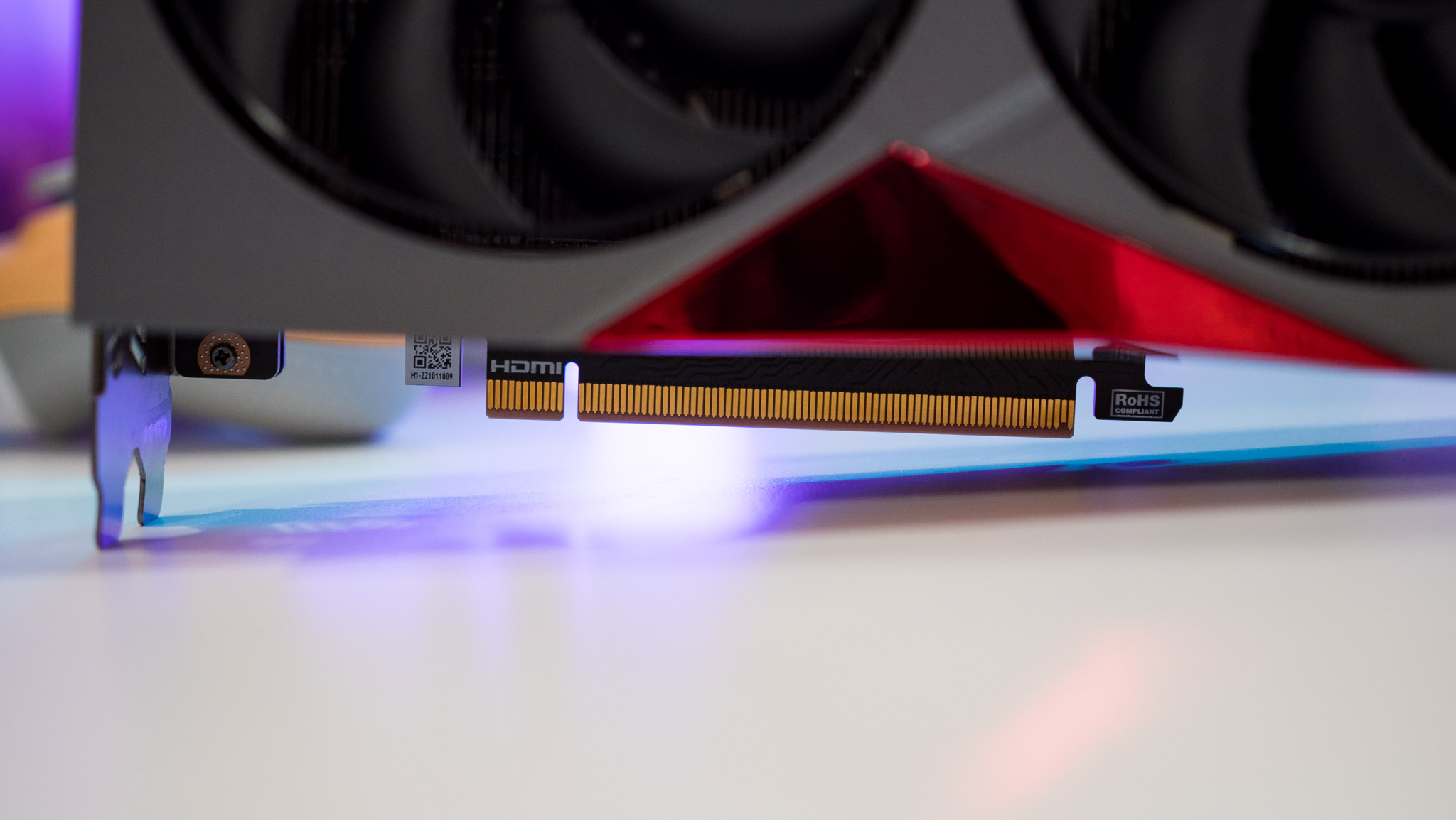
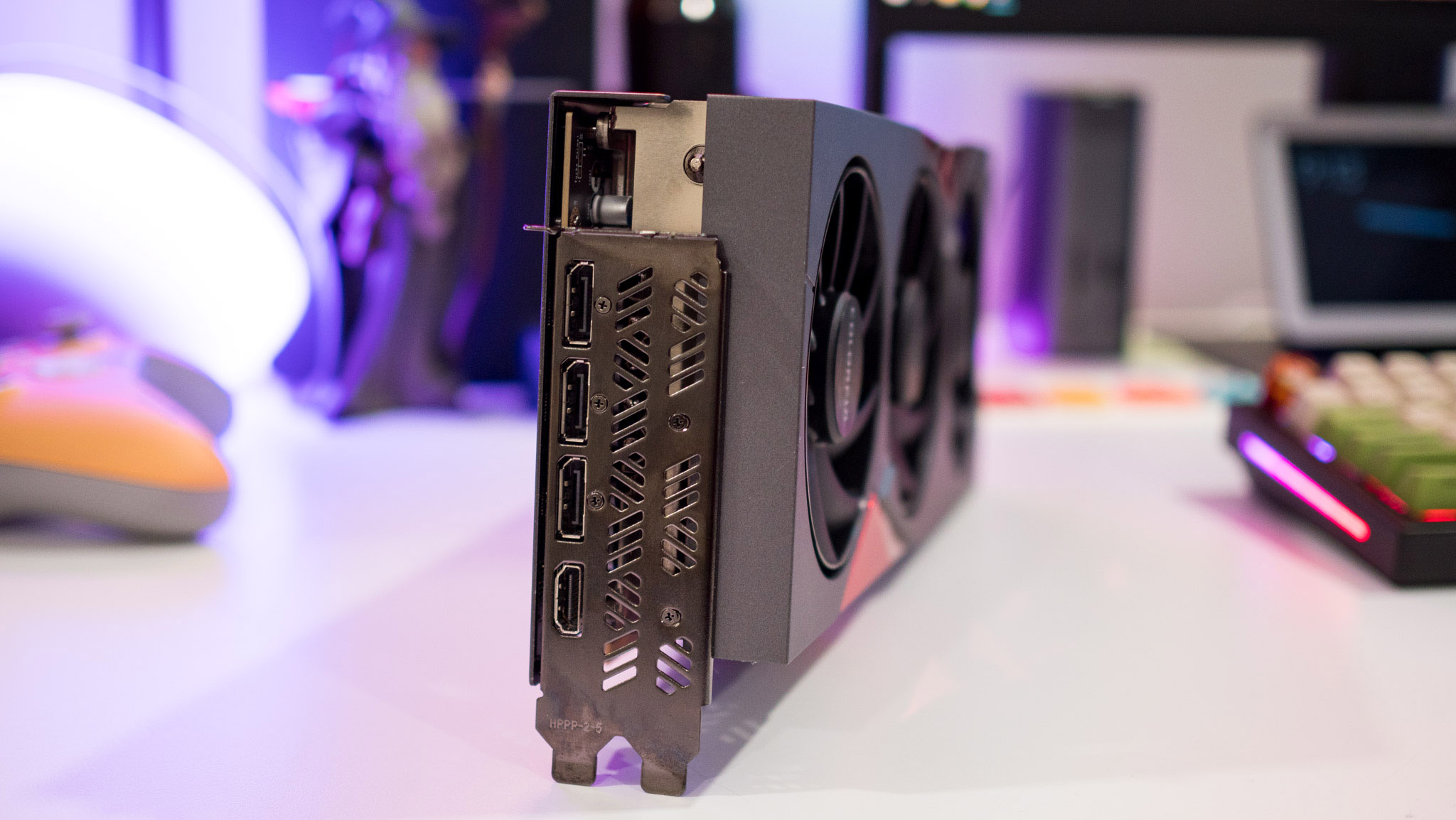
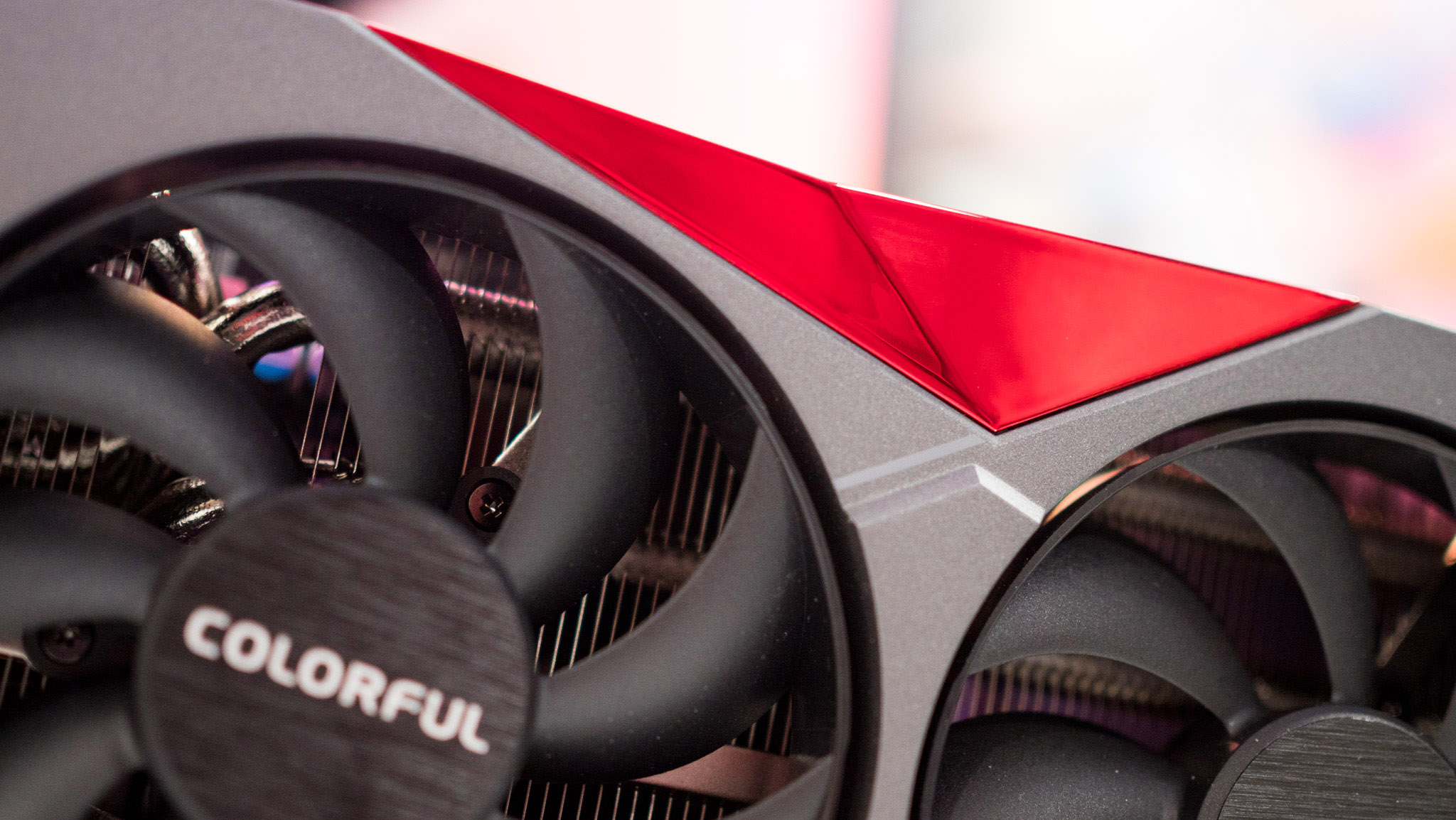
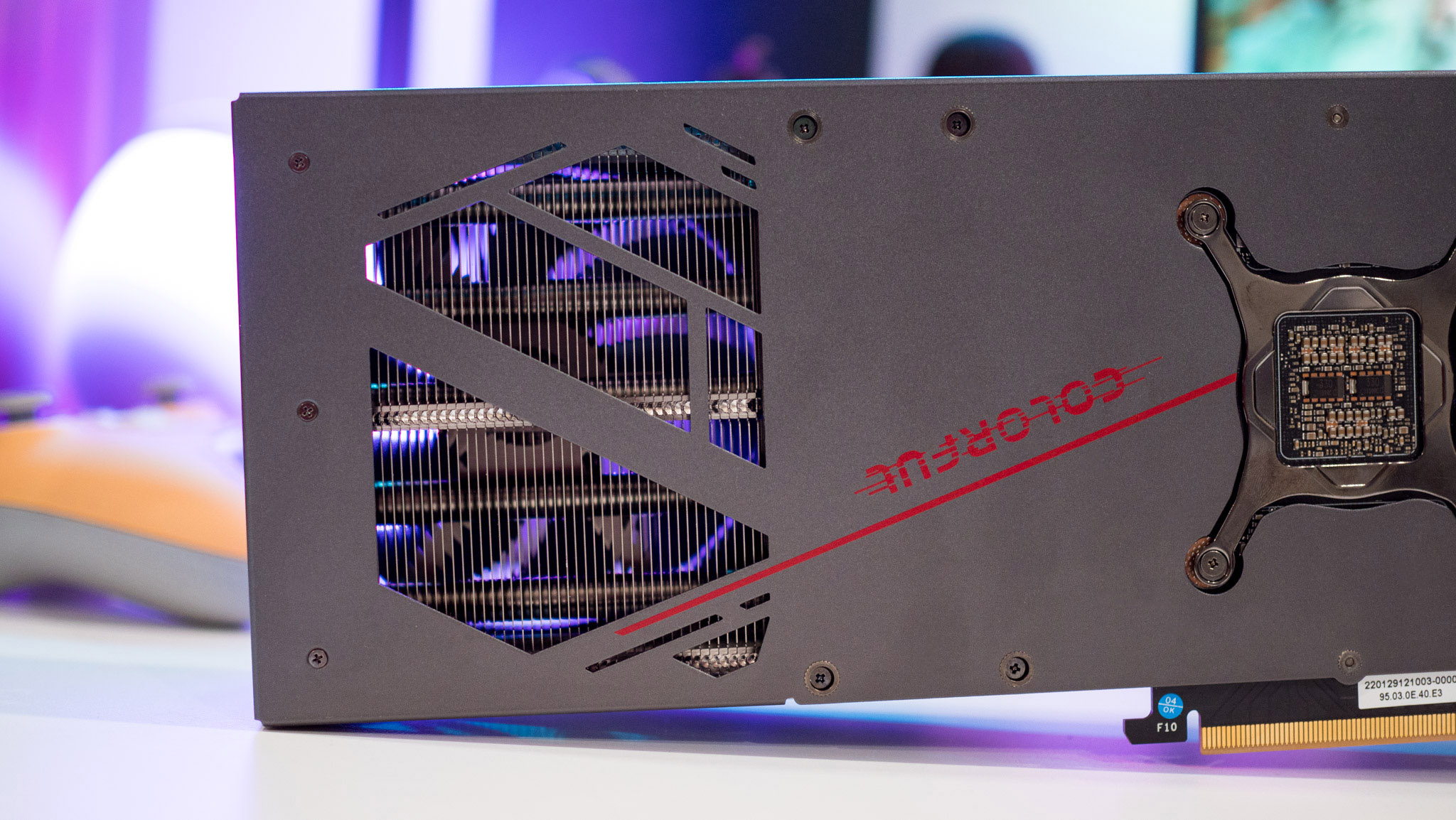
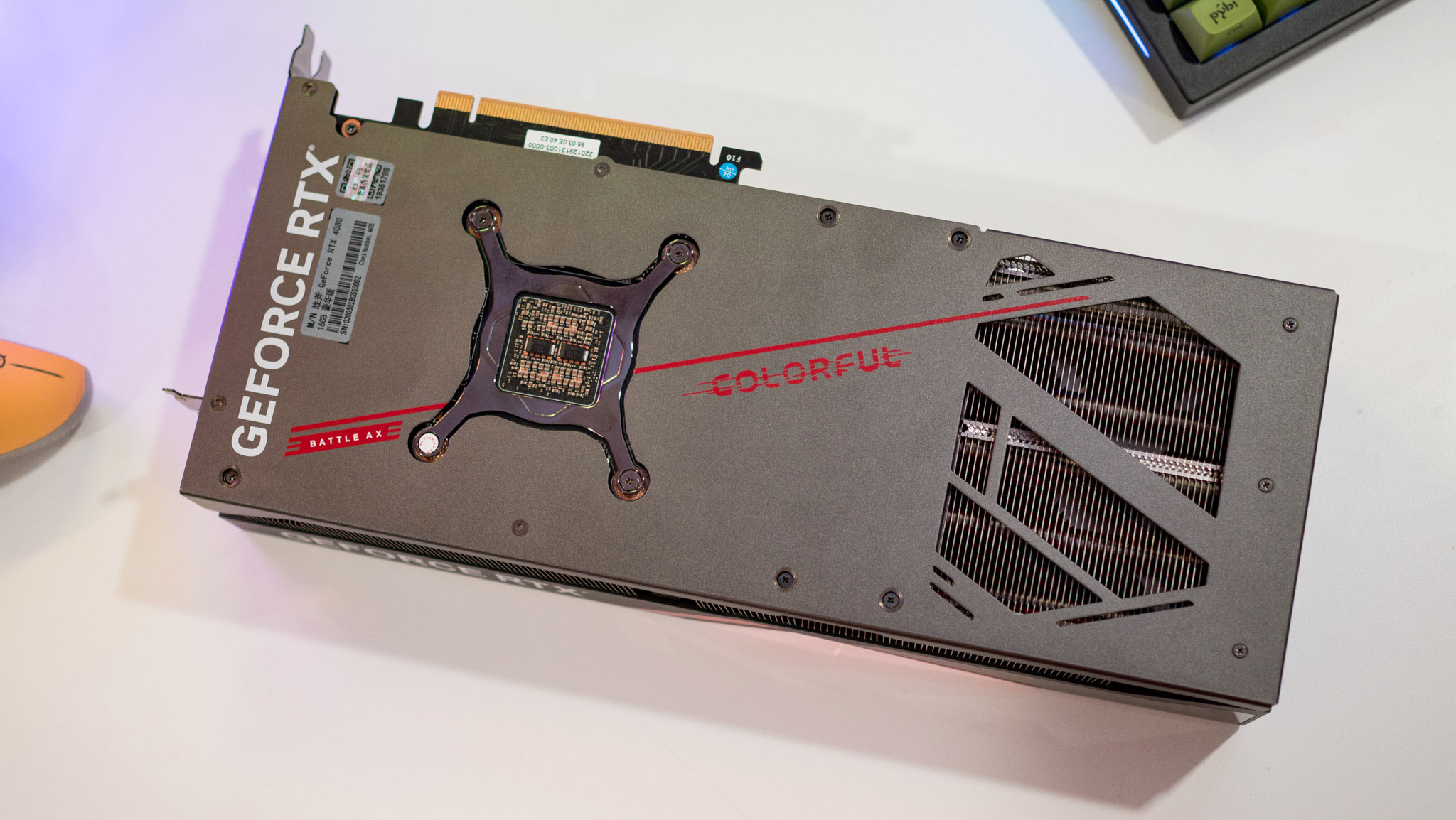
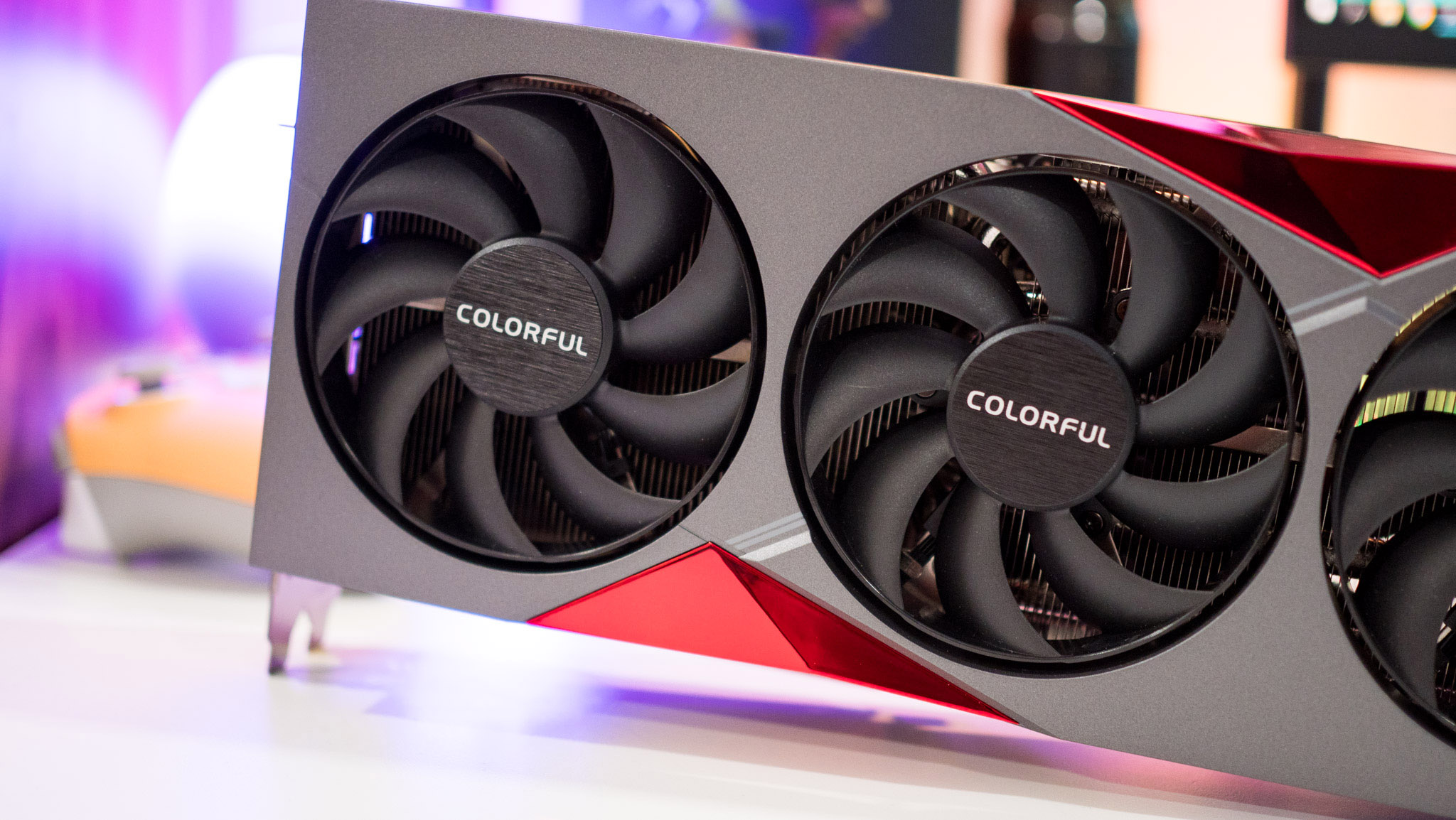
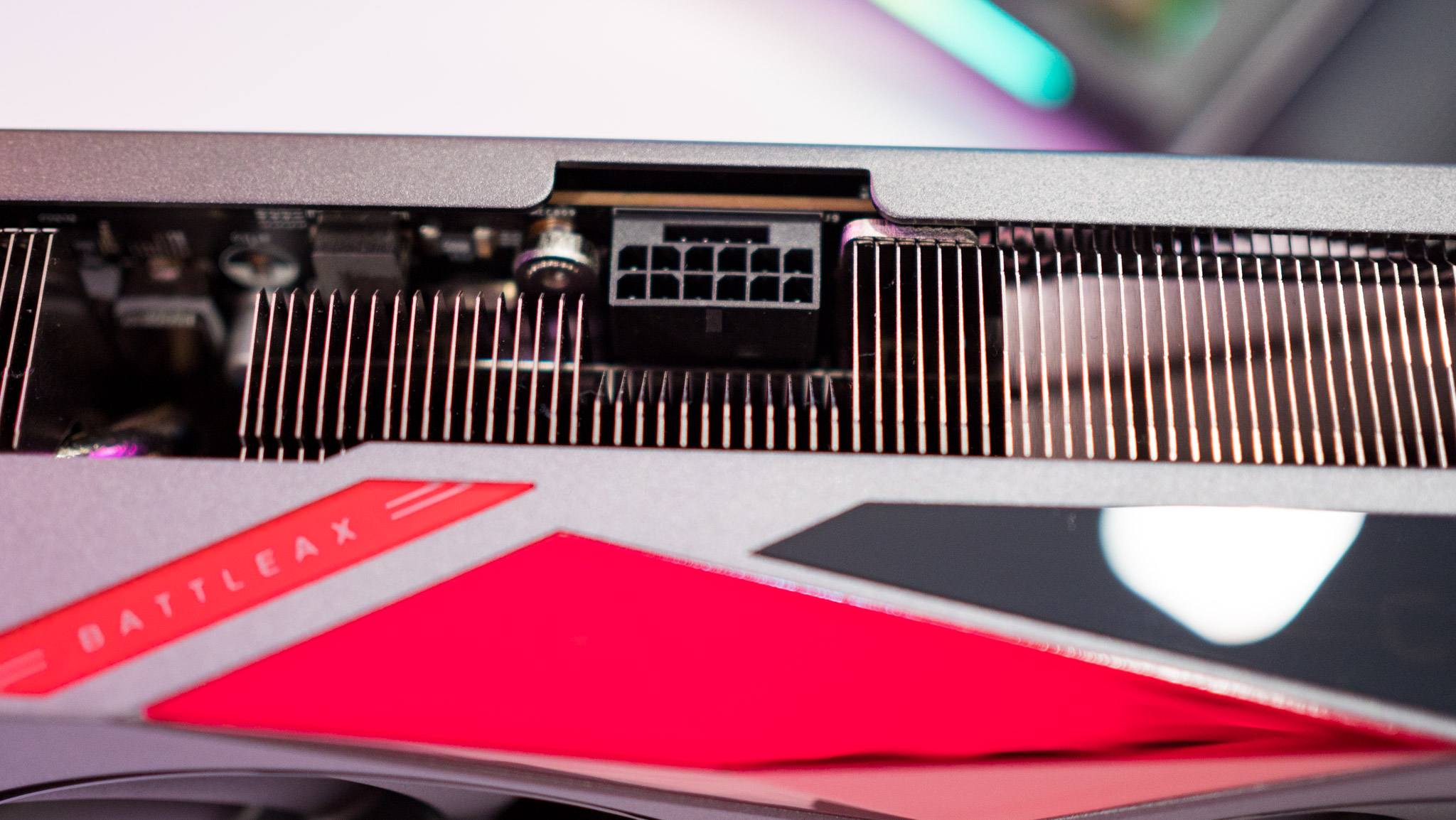
It is also quite heavy at 3.7 lb (1.7kg), and that's in no small part down to the backplate. Like NVIDIA's own cards, Colorful went with a vented design here to allow air to flow via the backplate, and that makes a difference. The 12+4 pin 12VHPWR connector is located at the top, and I thankfully didn't see any issues in this area. I was initially worried when plugging in the three PCIe 8-pin cables to the connector, but after using the card for a month, things have been rock-solid.
Colorful GeForce RTX 4080: Efficiency and performance
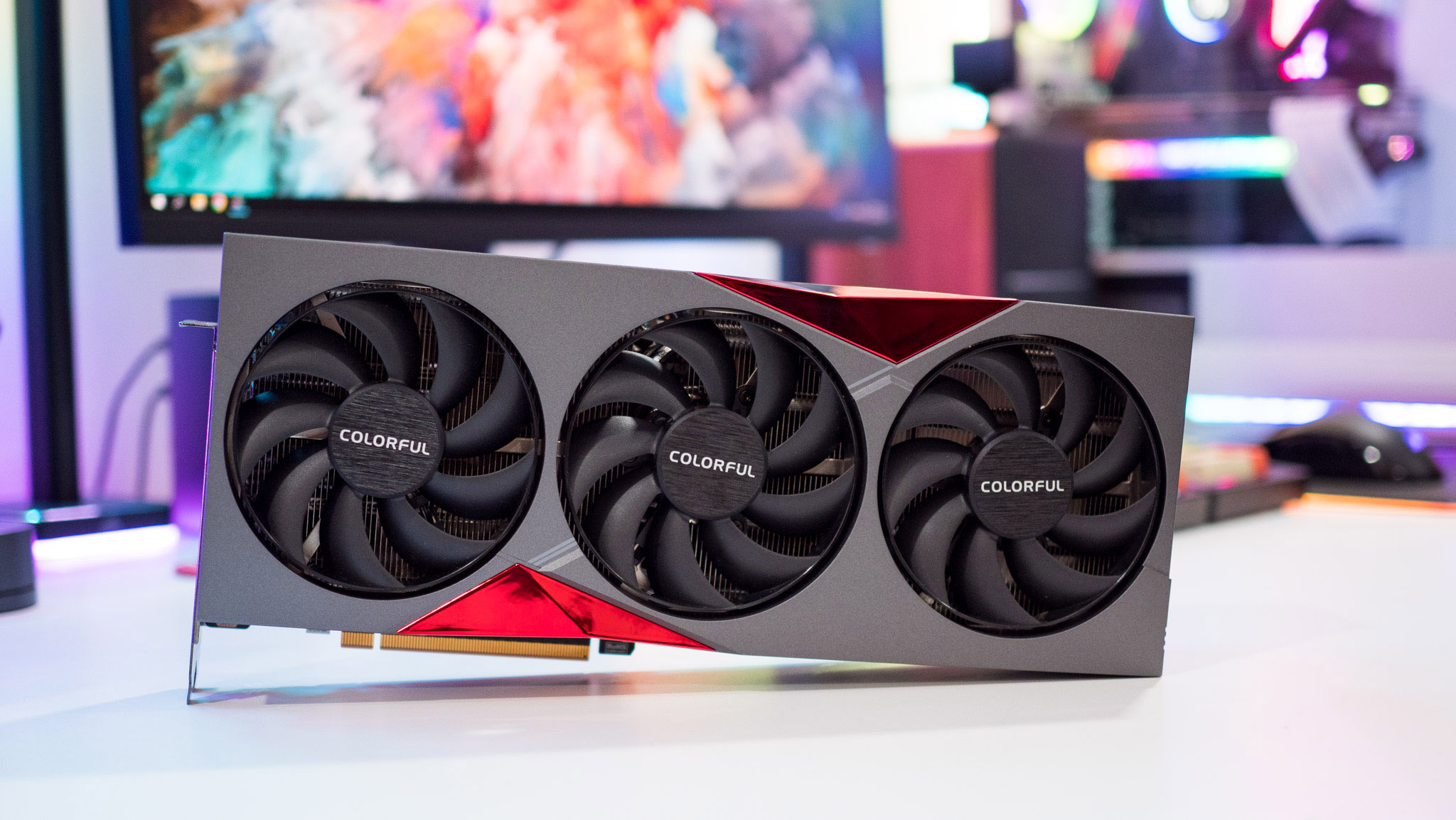
The RTX 4080 is aimed at gamers looking to get the best possible framerates, and is frankly overkill if you don't have a 4K monitor — you're better served by the RTX 3080 or even the RTX 3070 if you're using a QHD or FHD monitor. It still makes sense to get the RTX 4080 if you have a QHD monitor with 144Hz or higher refresh rates as it will deliver better framerates than the RTX 3080, but you will be paying a huge premium.
Thanks to the switch to 4nm, there are huge gains on the efficiency side of things, and the RTX 4080 consumes less power for the same workloads as its predecessor. It consumes less than 20W when idling, going up to 25W for video playback. While gaming, it hits just over 300W, a full 40W less than the Founders Edition RTX 3080. It can go up to 370W under full load, and from an efficiency point of view, it demolishes the RTX 3080.
| Category | GeForce RTX 4090 | GeForce RTX 4080 | GeForce RTX 3080 | GeForce RTX 3090 Ti |
|---|---|---|---|---|
| Assassin's Creed Valhalla | 108.4 | 92.7 | 54.4 | 66.8 |
| Borderlands 3 | 112.3 | 92.5 | 75.2 | 88.7 |
| Control | 116.7 | 93.2 | 58.4 | 75.8 |
| Cyberpunk 2077 | 73.4 | 59.6 | 37.6 | 48.4 |
| Elden Ring | 116.4 | 92.7 | 63.1 | 79.8 |
| Far Cry 6 | 138.6 | 112.7 | 84.8 | 98.0 |
| F1 22 | 267.3 | 192.1 | 128.6 | 160.4 |
| Halo Infinite | 108.1 | 94.7 | 61.5 | 74.8 |
| Metro Exodus | 184.2 | 143.7 | 94.8 | 126.6 |
| Red Dead Redemption 2 | 106.2 | 88.4 | 62.2 | 77.5 |
| Watch Dogs Legion | 107.2 | 85.4 | 56.1 | 68.8 |
At 4K resolution and the settings maxed out in each game, the RTX 4080 delivers huge gains across the board against the RTX 3080. What's particularly interesting is that the card is consistently faster than the best of the RTX 30 series, the $2,000 3090 Ti.
There's a noticeable 10 to 15% uptick against the mighty RTX 3090 Ti in most games, and what's incredible is that you'll see a performance delta of an insane 45% between the RTX 3080 and 4080 in 4K titles. The RTX 4080 is second only to the RTX 4090 in this regard, and if you've invested in a 4K monitor and want to make the most of it, the RTX 4080 is the way to go here.
| Category | GeForce RTX 4090 | GeForce RTX 4080 | GeForce RTX 3080 | GeForce RTX 3090 Ti |
|---|---|---|---|---|
| Assassin's Creed Valhalla | 161.4 | 136.8 | 86.7 | 98.8 |
| Borderlands 3 | 192.5 | 171.8 | 102.4 | 146.7 |
| Control | 220.8 | 168.9 | 109.1 | 141.3 |
| Cyberpunk 2077 | 138.3 | 116.5 | 74.6 | 96.4 |
| Elden Ring | 142.8 | 129.4 | 93.3 | 106.7 |
| Far Cry 6 | 148.7 | 126.8 | 90.5 | 106.2 |
| F1 22 | 285.1 | 271.8 | 194.7 | 238.2 |
| Halo Infinite | 171.8 | 148.5 | 91.4 | 122.7 |
| Metro Exodus | 249.2 | 233.8 | 158.6 | 192.5 |
| Red Dead Redemption 2 | 141.9 | 122.7 | 85.3 | 98.1 |
| Watch Dogs Legion | 146.7 | 129.4 | 91.3 | 106.1 |
You'll find a similar story at QHD resolution, and the RTX 4080 has a comfortable lead over the RTX 3080 and even the 3090 Ti, bested only by the 4090. The card is a great choice if you have a QHD monitor with a high refresh rate, but if you want to maximize value, I'd still suggest getting the RTX 3080 for this resolution.
| Category | GeForce RTX 4090 | GeForce RTX 4080 | GeForce RTX 3080 | GeForce RTX 3090 Ti |
|---|---|---|---|---|
| Control | 75.1 | 58.2 | 34.2 | 41.3 |
| F1 22 | 87.4 | 62.3 | 38.5 | 51.1 |
| Far Cry 6 | 98.6 | 86.2 | 62.8 | 79.8 |
| Metro Exodus | 126.5 | 92.8 | 51.3 | 70.6 |
As with the last two generations, enabling ray tracing leads to a huge hit in framerates, but thanks to the new cores and architecture, the RTX 4080 fares significantly better than its predecessors — particularly at 4K.
The RTX 4080 has a huge advantage over the RTX 3080 at QHD as well, and you'll see nearly double the scores for most titles. There aren't many titles out with DLSS 3 at this moment, but in games like The Witcher 3: Wild Hunt, the card was able to deliver over 80fps with the new Frame Generation feature, an increase of 35%.
Overall, DLSS 3 is a groundbreaking new addition that turbocharges ray tracing, and NVIDIA has managed to carve out a significant lead over AMD in this area.
Colorful GeForce RTX 4080: The alternatives
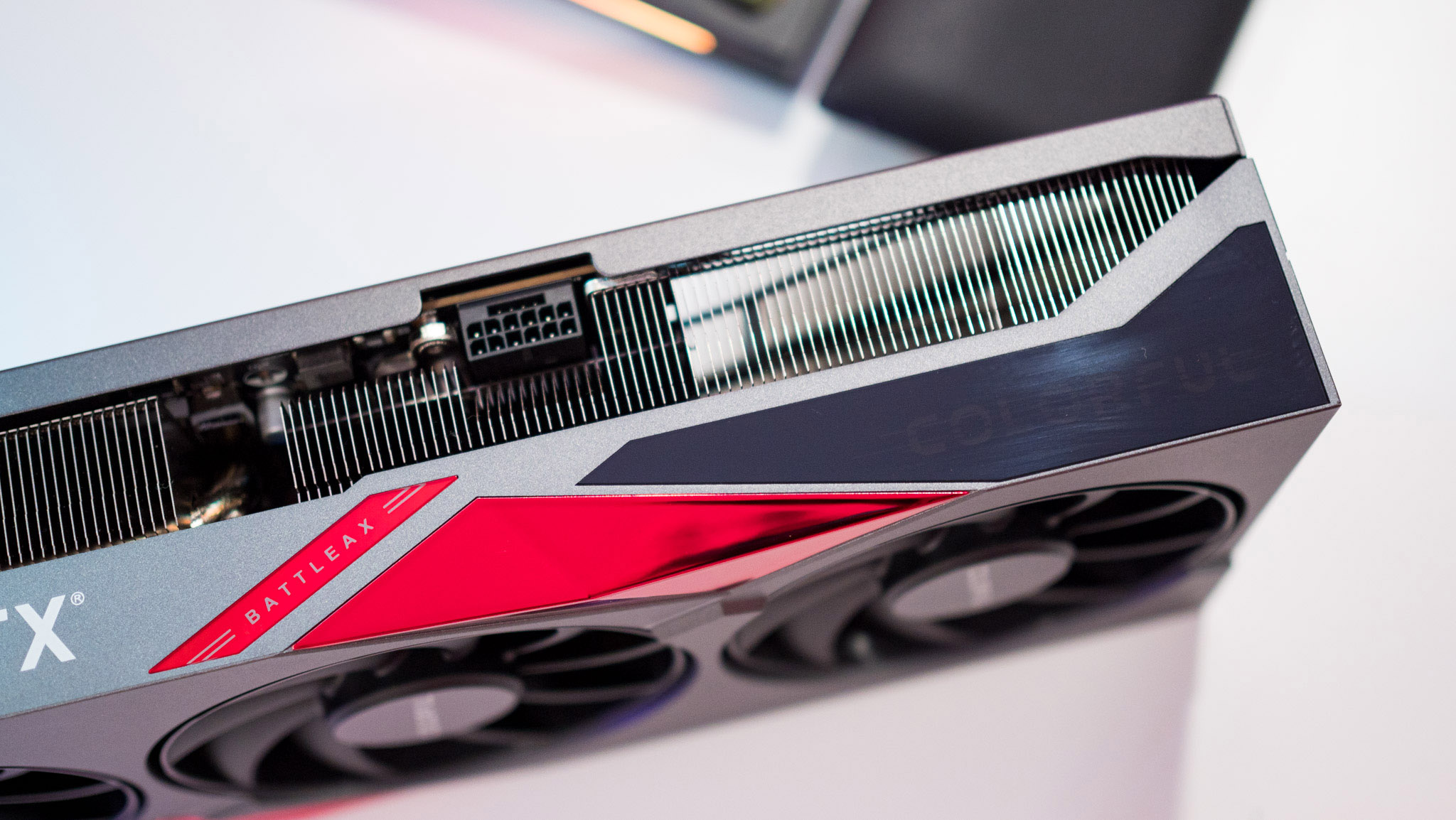
The biggest issue with the RTX 4080 is just how much it costs, and if you're not willing to shell out that much money, you're in luck. NVIDIA and its AIB partners have a lot of unsold inventory of the RTX 30 series, and you can get the RTX 3080 or 3080 Ti at a decent discount. While the RTX 30 series doesn't quite hold up against the RTX 4080 when it comes to 4K, you are getting a much better value.
AMD's Radeon RX 7900 XT is also an enticing choice if you're interested in 4K gaming. It retails for a few hundred dollars less than the RTX 4080, and while it doesn't quite deliver the same smooth framerates, it gets quite close.
Colorful GeForce RTX 4080: Should you buy it?
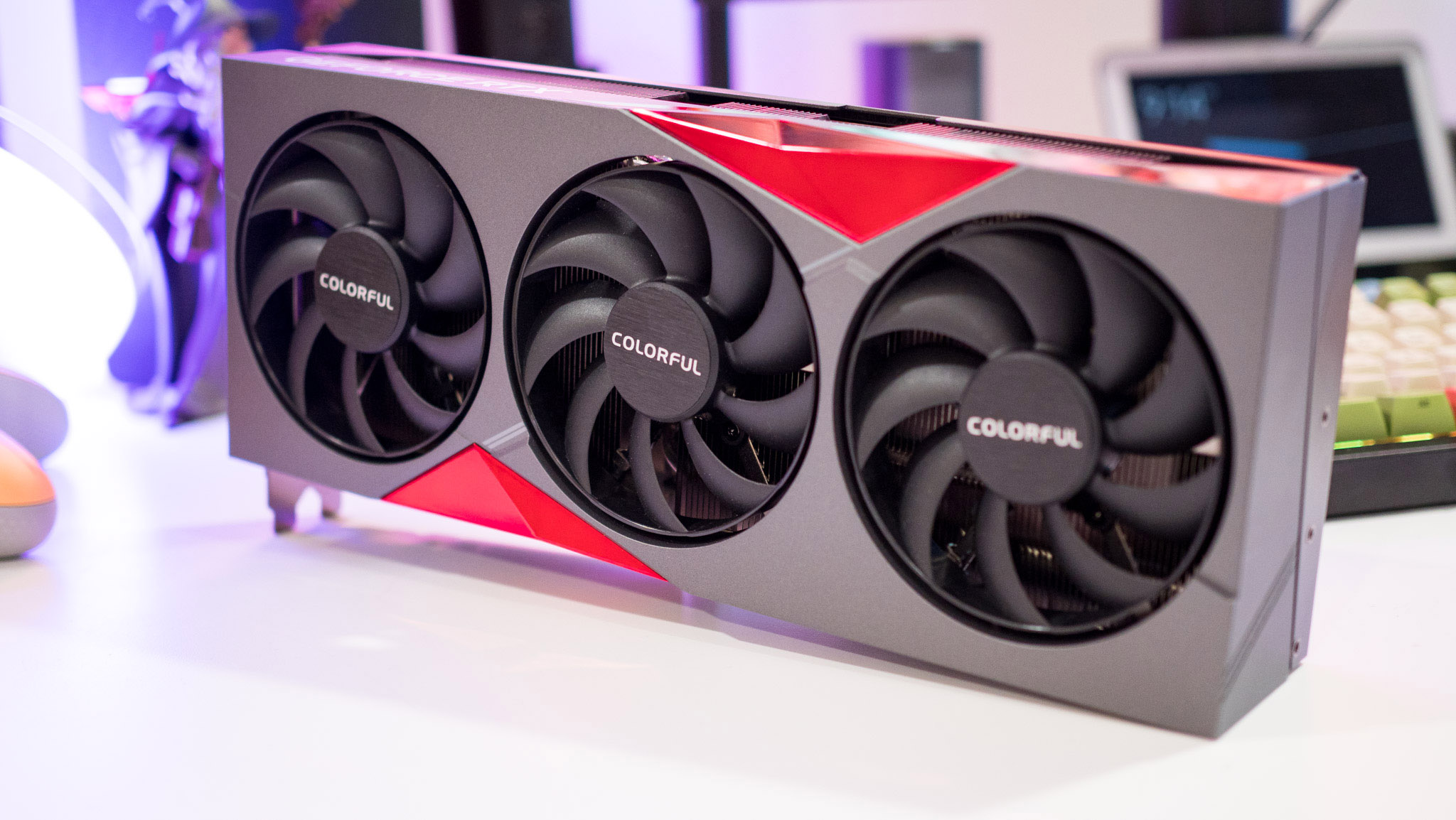
You should buy this if:
- You're looking for the ultimate video card for 4K gaming
- You need a card that excels at ray tracing
- You need good energy efficiency
- You want a card that's faster than the RTX 3090 Ti
You shouldn't buy this if:
- You want a video card that's affordable
- You need a video card that isn't too big
With the RTX 4080, NVIDIA is delivering huge gains in all key areas against the RTX 3080. The Ada Lovelace architecture and the shift to a new 4nm node lead to much better efficiency, and the card is nearly twice as fast as the RTX 3080 at 4K resolution — you finally get 60fps in most titles without breaking a sweat.
However, all of those gains come at a cost. The RTX 4080 starts off at a hefty $1,199, and while you are getting good value here — it is demonstrably faster than the $2,000 RTX 3090 Ti at 4K — that is a lot of money to pay for a video card, particularly given that discounted RTX 30 cards are still available.
At the end of the day, you will have to decide if you want to invest that kind of money toward a video card. For what it's worth, the RTX 4080 is the ideal choice if you're using a 4K monitor or QHD monitor with a high refresh rate, and NVIDIA is doing all the right things with DLSS 3. That feature has plenty of potential, and I'm interested in seeing how game makers leverage it in the future. For now though, the RTX 4080 is the best option if you want effortless 4K gaming.
If you don't want to shell out that kind of money, the RTX 30 series is still a reliable option, as is AMD's recent Radeon RX 7900 XT — there's no shortage of choice at the moment.
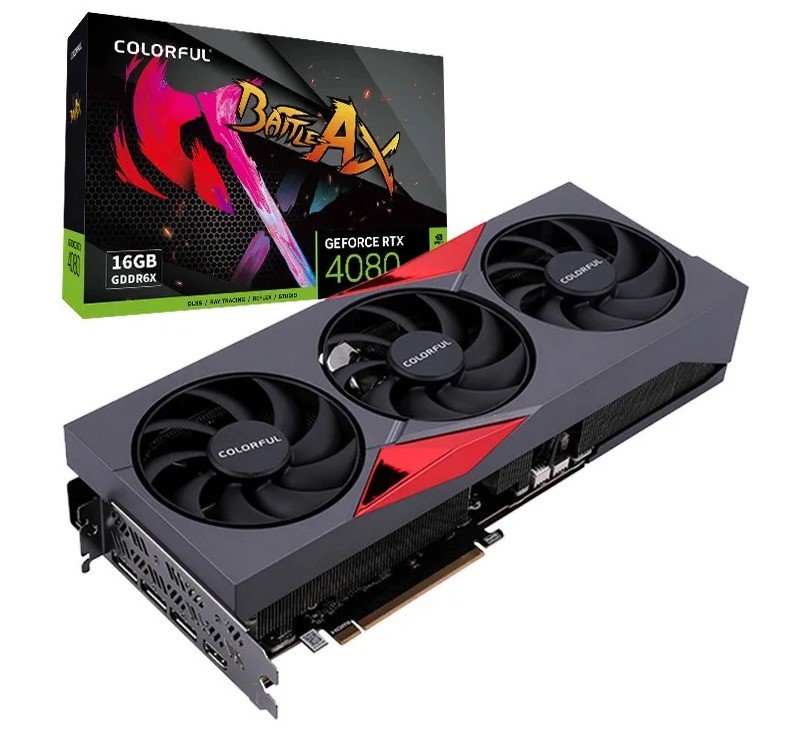
Colorful did a great job with the GeForce RTX 4080 NB EX-V. The card has an elegant design that looks great, and it is on par with other AIB cards that aren't factory overclocked. If you're in a country where it is available, this is a great alternative to the Founders Edition RTX 4080.

Harish Jonnalagadda is a Senior Editor overseeing Asia for Android Central, Windows Central's sister site. When not reviewing phones, he's testing PC hardware, including video cards, motherboards, gaming accessories, and keyboards.
